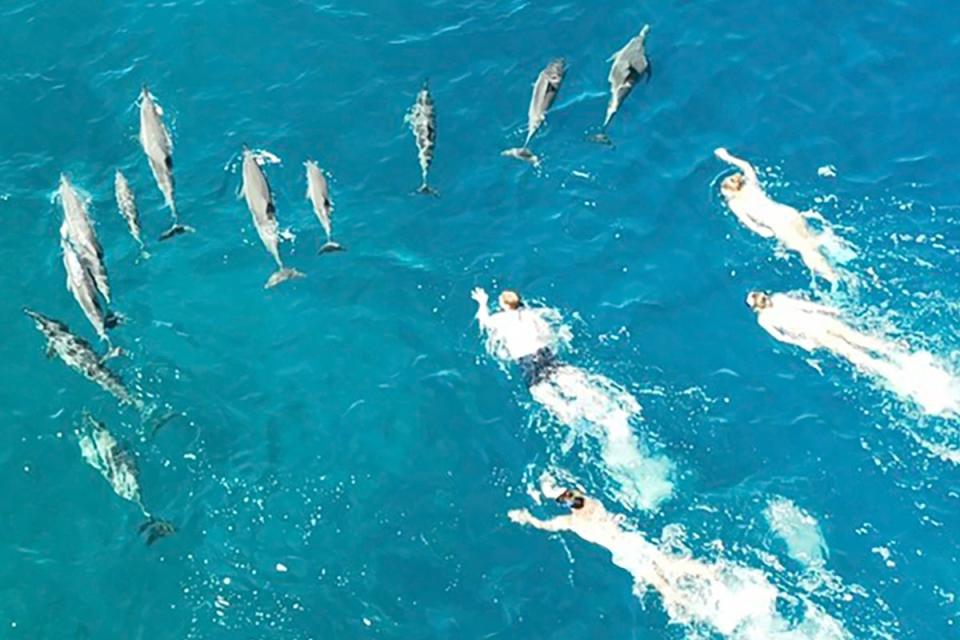Group of 33 swimmers found ‘aggressively harassing’ dolphins in Hawaii

Thirty-three swimmers have been referred to the US authorities after “aggressively harassing” a pod of wild dolphins in Hawaii.
The group, thought to be tourists, were found snorkeling near dolphins in Honaunau Bay off Big Island on Sunday, in breach of rules that aim to protect the native creatures.
Aerial footage shot by drone by Hawaii’s Department of Land and Natural Resources shows the pod, which appears to include calves, trying to swim away as they are pursued by the snorkelers.

The department said the swimmers appeared to be “aggressively pursuing, corralling and harassing” the creatures.
It is against federal law to swim within 50 yards of spinner dolphins in Hawaii’s nearshore waters.
The legislation came into effect in 2021 after concerns were raised huge numbers of tourists who were swimming with dolphins were preventing the nocturnal animals from getting the rest they needed during the day to be able to forage for food at night.
Enforcement officers contacted the group while they were in the water, and told them about the violation.

Photos showed the swimmers being met by uniformed officers on land, where state and federal officials launched a joint investigation.
Hawaii’s spinner dolphins feast on fish and small crustaceans that surface from the ocean’s depths at night. When the sun rises, they head for shallow bays to hide from tiger sharks and other predators.
They often appear to be awake during the day because they are swimming.
But because they sleep by resting half of their brains and keeping the other half awake to surface and breathe, they may be sleeping even when they’re moving through the water.
The rule banning people from swimming near dolphins applies to areas within two nautical miles (3.7 kilometers) of the Hawaiian Islands and in designated waters surrounded by the islands of Lanai, Maui and Kahoolawe.

 Yahoo Sport
Yahoo Sport 





































